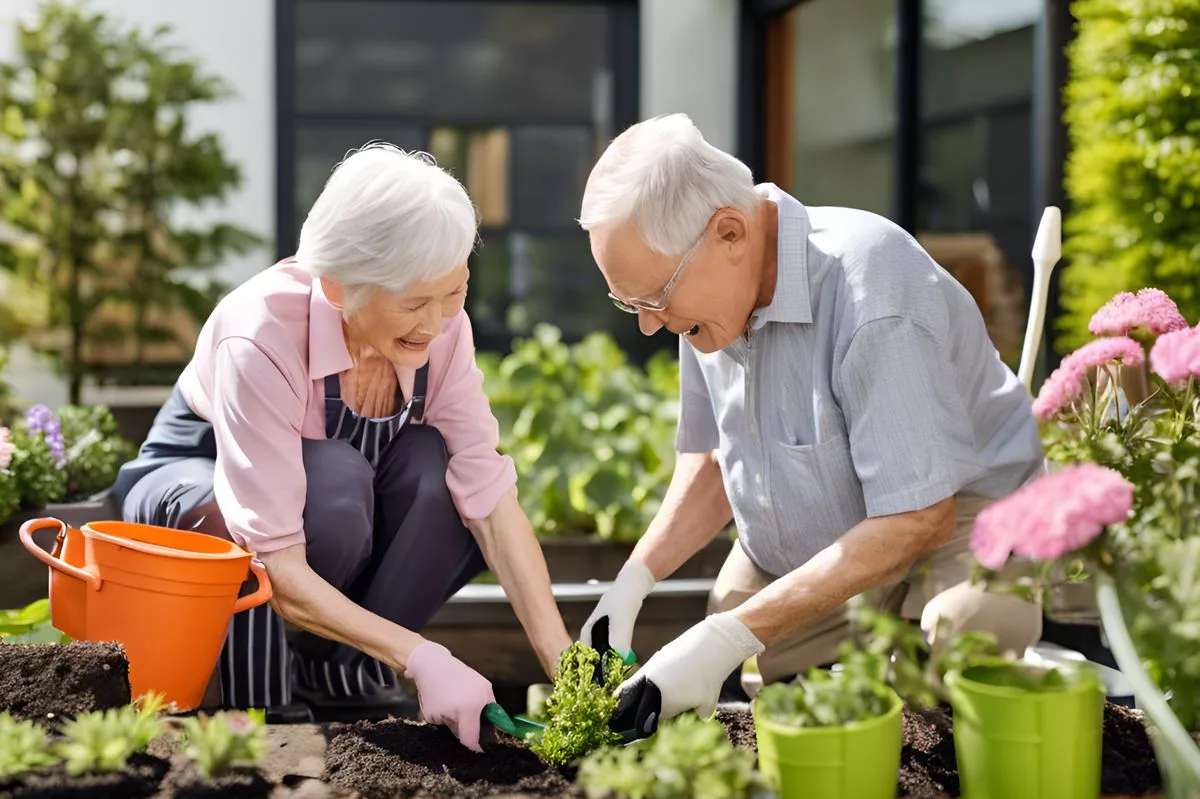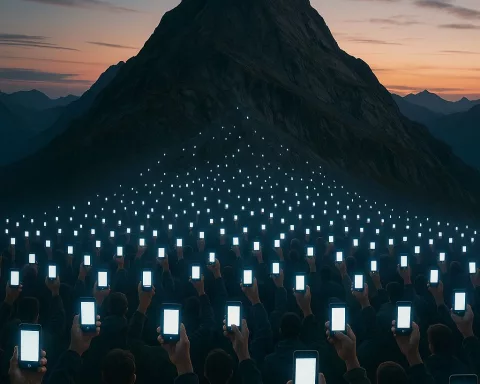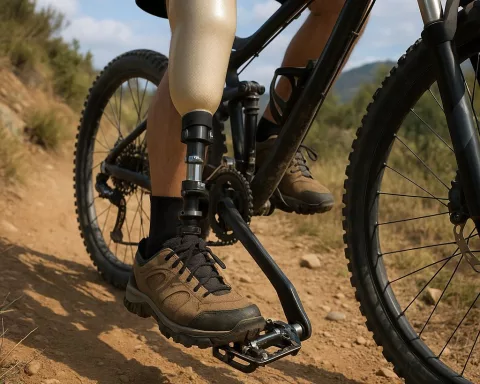Retirement living is being redefined with a focus on luxury, wellbeing, and sustainability. Modern retirement communities are embracing new design trends that include wellness-centric features such as gyms, yoga studios, and natural elements like living walls of plants. Technology is also being integrated into residents’ units with fiber-optic internet connections that enable seniors to work, socialize, and manage their health. Sustainability is a critical factor, with renewable energy sources like solar power being encouraged, and developers are creating spaces that nurture inter-generational relationships to address residents’ fear of isolation.
A New Wave of Retirees
Today’s retirees have high lifestyle standards, expecting luxury retirement communities that encourage wellbeing, community, sustainability, and integration of technology. Safety and accessibility remain a focus, with wheelchair ramps, elevators, broad corridors, level entrances, grab bars, and handrails implemented to improve residents’ quality of life.
A new dawn is rising in senior living. The days of boring, uninspired retirement developments have made way for a modern, attractive, and wellbeing-focused reality. Today’s retirees are sophisticated, with high lifestyle standards, expecting no less than luxury retirement communities. A perfect example of this evolution is Wytham Estate in Cape Town, which is at the forefront, reshaping the understanding of retirement living.
A New Wave of Retirees
Our new generation retirees, moving from their opulent family homes, have no intention of surrendering the sophisticated design and contemporary comforts they’ve relished for years. This sentiment is strongly supported by Gus van der Spek, the owner of Wytham Estate. He underscores the necessity of establishing environments that are not just visually stunning and equipped with the latest amenities but also encourage wellbeing, community, sustainability, and integration of technology.
In the context of retirement living design, safety and accessibility are the main focus. This extends beyond obvious elements such as wheelchair ramps and elevators, to more understated design features like broad corridors and level entrances. The addition of grab bars near toilets and handrails in showers are some of the progressive methods being implemented to ensure safety and accessibility, consequently improving the residents’ quality of life.
Wellness-Centric Design and Technological Integration
Modern retirement communities are embracing wellness-centric design in a whole new light. Recognizing the significant role that exercise plays in encouraging healthy aging, developers are adding amenities such as gyms, yoga studios, and tennis courts to their design blueprints. Furthermore, biophilic design trends, which emphasize the inclusion of natural elements like living walls of plants, water features, and glass atriums, are gaining momentum. Not only do these elements enhance the aesthetic allure of the surroundings, but they also confer health benefits like improved sleep and emotional health due to increased exposure to sunlight.
Modern retirement living is also characterized by the integration of technology. Sophisticated resident units, furnished with remote-controlled technologies give seniors more control over their surroundings, guaranteeing maximum comfort and convenience. These units come with a variety of features from temperature and lighting adjustments to voice-controlled virtual assistants, all powered by fast, fiber-optic internet connections.
Reliable internet access has benefits that surpass mere convenience. It enables residents to maintain their independence by continuing to work, keep in touch with far-off family and friends, and even manage their health via smart devices such as prescription management systems and fall detection sensors.
Eco-Friendly Living and Sense of Community
Sustainability is another significant trend shaping the future of retirement living. Renewable energy sources, like solar power, are now encouraged. Not only do these sources offer a reliable power supply, reducing the risk of power cuts that can adversely affect seniors, but they also encourage green living by reducing carbon footprint and energy costs.
Addressing residents’ fear of isolation is a critical challenge for retirement developers. They are creating spaces that nurture inter-generational relationships. By integrating shopping, dining, and recreational amenities with their residential services, developers are inspiring residents to form social bonds.
Moreover, some retirement communities are going above and beyond by constructing boutique hotel rooms within their property. This allows for visiting family members to stay more extended periods, making their visits more comfortable.
To sum up, the future of retirement living is dynamic and innovative, shifting towards a more comprehensive and inclusive approach. By catering to the physical, emotional, and social needs of residents, developers are completely reimagining what it means to retire. They are enhancing the quality of life for seniors and ushering in a new epoch of retirement living.
What are some new design trends in retirement living communities?
New design trends in retirement living communities include wellness-centric features such as gyms, yoga studios, and natural elements like living walls of plants. Technology is also being integrated into residents’ units with fiber-optic internet connections that enable seniors to work, socialize, and manage their health. Sustainability is also a critical factor, with renewable energy sources like solar power being encouraged, and developers are creating spaces that nurture inter-generational relationships to address residents’ fear of isolation.
What are some lifestyle standards of today’s retirees?
Today’s retirees have high lifestyle standards, expecting luxury retirement communities that encourage wellbeing, community, sustainability, and integration of technology. They also prioritize safety and accessibility, with wheelchair ramps, elevators, broad corridors, level entrances, grab bars, and handrails implemented to improve residents’ quality of life.
How is technology being integrated into retirement living communities?
Technology is being integrated into retirement living communities through sophisticated resident units furnished with remote-controlled technologies that give seniors more control over their surroundings, guaranteeing maximum comfort and convenience. These units come with a variety of features from temperature and lighting adjustments to voice-controlled virtual assistants, all powered by fast, fiber-optic internet connections. Reliable internet access also allows residents to maintain their independence by continuing to work, keep in touch with far-off family and friends, and even manage their health via smart devices such as prescription management systems and fall detection sensors.
How are retirement living communities encouraging sustainability?
Retirement living communities are encouraging sustainability by embracing renewable energy sources, like solar power. These sources offer a reliable power supply, reducing the risk of power cuts that can adversely affect seniors, and they also encourage green living by reducing carbon footprint and energy costs.
How are retirement living communities addressing residents’ fear of isolation?
Retirement living communities are addressing residents’ fear of isolation by creating spaces that nurture inter-generational relationships. By integrating shopping, dining, and recreational amenities with their residential services, developers are inspiring residents to form social bonds. Some retirement communities are also constructing boutique hotel rooms within their property, allowing for visiting family members to stay more extended periods, making their visits more comfortable.
What are the benefits of wellness-centric design in retirement living communities?
Wellness-centric design in retirement living communities offers several benefits, including encouraging healthy aging through exercise amenities such as gyms, yoga studios, and tennis courts. Biophilic design trends that emphasize the inclusion of natural elements like living walls of plants, water features, and glass atriums, also confer health benefits like improved sleep and emotional health due to increased exposure to sunlight.








